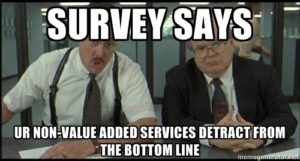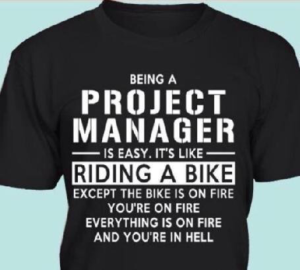 Data or software projects are usually purchased in one of two ways: as a part of a large, enterprise level deal that impacts multiple teams and has overarching corporate goals or as a stand alone purchase for a specific purpose for a specific team. This sales context can make for very interesting project management moments.
Data or software projects are usually purchased in one of two ways: as a part of a large, enterprise level deal that impacts multiple teams and has overarching corporate goals or as a stand alone purchase for a specific purpose for a specific team. This sales context can make for very interesting project management moments.
If we take the scenario where an organization makes an enterprise level implementation decision, you could have some additional levels of complexity. For example:
- The project team may have to “sell” the project to the individual teams of users within the organization. The teams will likely have different levels of familiarity and maturity with the business process or solution.
- Where there are varying levels of maturity, you have to be careful to effectively set expectations and cater differently to teams based on their desired engagement.
In another scenario, one part of the organization makes a purchasing decision with dependencies on other parts of the organization. This will often result is some interesting yet awkward project conversations. For example:
- If you need to engage with another part of the organization to make the project be successful, it’s important to lay out all the facts and deciding factors. Too often project conversations must occur to relieve stakeholder concerns without those stakeholders having all the facts. Those seemingly minute details can totally shift the tone of conversations, making or breaking success.
And last, let’s consider the scenario where a specific team is looking at a solution. In this case, there can be additional considerations both in the sales process but in the project management as well. For example:
- Does the team control the purse strings? Or are there other dependent groups or players? Make sure you fully understand the landscape of stakeholders & stakes.
- Does the pain points being discussed align to what you do best? Just because you can sell your solution, doesn’t mean you should.
- How does this sale fit into the overall goal of you both organizations? Is this a one-off purchase by a team without any broader organizational support? or are there opportunities for growth for both parties?
Project management in itself is a fairly straightforward undertaking. Your job as project manager is to deliver on the project goals. As the saying goes, “the devil is in the details.” You need to quickly assess the lay of the project land. Who are the key players involved in the project? Who are the key players not involved directly in the project? What are the potential pitfalls or landmines you need keep on your radar (not necessarily on your horizon as you should be working to mitigate these as much as possible)?
 Engagement is not passively granted, but rather actively earned. As part of the project implementation, there needs to be special consideration given to figuring out how to keep users involved & engaged. Here are 3 options for continuing the conversation with the user community:
Engagement is not passively granted, but rather actively earned. As part of the project implementation, there needs to be special consideration given to figuring out how to keep users involved & engaged. Here are 3 options for continuing the conversation with the user community:





